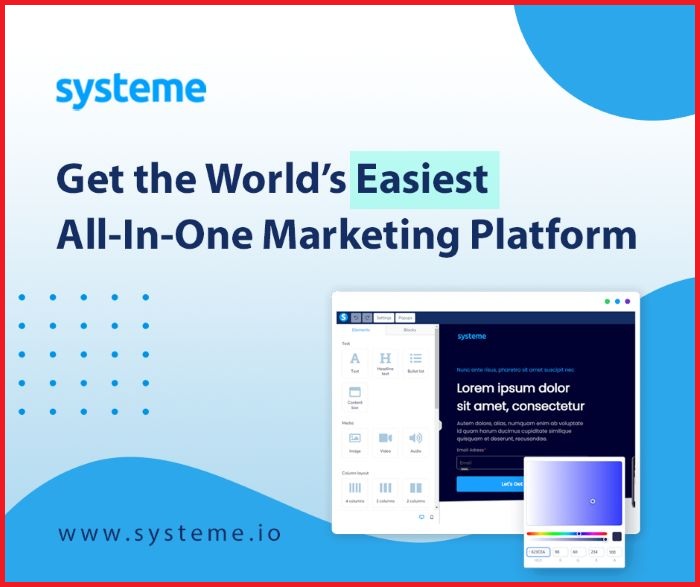If you want to boost your sales process, you must understand the concept of a sales funnel. A sales funnel helps guide potential customers from their first interaction with your company to the final purchase. You can use Salesforce to create and manage your sales funnel. With Salesforce, you can seamlessly track prospects, nurture leads, and ultimately increase sales conversions.

Creating an effective sales funnel involves mapping out each stage from attracting leads to closing deals. With Salesforce’s tools like Pardot and Salesforce Lightning, you can tailor the journey to fit your specific business needs. This ensures that your team is efficiently capturing and nurturing high-quality leads.
Salesforce not only simplifies tracking but also offers analytics that can forecast sales performance and optimize strategies. If used effectively, these insights can help you enhance customer retention and overall sales funnel efficiency.
Key Takeaways
- Salesforce helps turn leads into customers through a structured sales funnel.
- Customize and optimize each stage of the sales process with Salesforce tools.
- Use Salesforce analytics for better sales forecasting and retention.
Understanding the Salesforce Sales Funnel
In the realm of sales, the concept of a sales funnel is crucial. It outlines the journey of potential customers from first contact to purchase. Using platforms like Salesforce enhances this process by offering tools to boost efficiency and conversions.
Definition and Overview of Sales Funnel
A sales funnel represents the stages a potential customer goes through before making a purchase. These stages often include awareness, interest, decision, and action. At each stage, the number of prospects decreases, resembling the shape of a funnel. Understanding these stages helps in identifying where prospects are in their journey and how best to engage with them.
This insight enables businesses to tailor their strategies to meet the needs of prospects at each stage.
Salesforce offers tools and features to manage and optimize these stages effectively. Using reports and dashboards, you can track and analyze data to improve your sales process. This makes the funnel more efficient by focusing on key conversion points. This helps in guiding potential customers seamlessly through their purchasing journey.
The Relevance of Salesforce in Sales Funnels
Salesforce plays a significant role in enhancing your sales funnel through its comprehensive set of tools. These tools help in tracking customer interactions and gathering data to optimize the sales process.
By harnessing Salesforce features, you can create detailed reports and dashboards that support data-driven decision-making.
This approach allows you to refine each stage of the funnel.
By analyzing where prospects drop off, Salesforce helps identify areas for improvement, leading to more efficient conversions. It enables you to personalize interactions, ensuring that each lead is approached with the right message at the right time. This optimized engagement increases the likelihood of turning prospects into customers, thereby maximizing sales outcomes.
Mapping the Sales Process
Understanding how a sales process flows is crucial for managing leads effectively. Salesforce provides tools to help you visualize and optimize each stage of the process. The role of CRM systems in this context is essential, ensuring seamless interactions and data-driven decisions.
Stages of the Salesforce Sales Funnel
In a Salesforce sales funnel, you guide prospects through distinct stages. This starts with lead generation, where potential customers first interact with your business. Next, during the qualification stage, you assess the viability of these leads.
Once qualified, prospects move into the engagement phase. Here, you build relationships through personalized interactions and tailored content. Finally, they reach the closing stage, where deals are finalized, and customers are secured.
Ensuring smooth transitions between these stages is key to maximizing conversion success.
Role of CRM in Managing the Sales Process
A Customer Relationship Management (CRM) system like Salesforce centralizes data, streamlining your sales process. It enables you to track customer interactions, monitor sales performance, and automate routine tasks.
With CRM, you gain insights into different stages of the sales funnel, helping you make informed decisions and identify opportunities for improvement.
Salesforce’s CRM tools allow you to customize the sales funnel, tailoring it to your business needs. This flexibility lets you adapt quickly to market changes, ensuring your sales process remains efficient and effective. Having a robust CRM in place is crucial for maintaining a competitive edge in today’s marketplace. Salesforce can assist in aligning marketing efforts with sales activities, optimizing the entire sales pipeline.
Optimizing Lead Generation
Optimizing lead generation involves effectively capturing and converting prospects into customers using strategic methods. By integrating Salesforce into your lead generation processes, you can enhance engagement and track the journey of each lead.
Strategies for Effective Lead Generation
To generate leads effectively, start by understanding your target audience. Identifying their needs and preferences can help tailor your approach.
Use targeted content to engage them, such as informative blogs, webinars, or eBooks that provide value.
You can also utilize social media platforms for wider reach. Platforms like LinkedIn and Facebook allow for tailored advertisements that can attract potential prospects based on your specified criteria. Building a solid presence on these channels increases your chances of capturing high-quality leads.
Regularly reviewing and adjusting your lead generation strategies ensures they remain effective in a rapidly changing market. Consider leveraging data to improve your approach and adapt to new trends.
Integrating Lead Generation with Salesforce
Salesforce offers powerful tools to enhance your lead generation efforts. Personalization is crucial; use Salesforce to segment leads based on specific criteria. This allows you to customize communication and offers, leading to better engagement.
Using Salesforce’s AI capabilities can further refine this process. AI can identify patterns and suggest actions to increase conversion rates.
Another key feature is tracking each lead’s progress, helping you understand which strategies are effective and which are not.
Integrating your lead generation with Salesforce also involves monitoring your sales funnel’s growth. This ensures efficient management and helps address any potential blockers, fostering a smoother transition from prospect to customer.
Lead Nurturing and Engagement
Lead nurturing and engagement are crucial in transforming potential customers into loyal clients. Salesforce offers tools and strategies to help you build strong, personalized relationships, ensuring leads smoothly progress through the sales funnel.
The Art of Lead Nurturing with Salesforce
Using Salesforce, you can enhance lead nurturing by automating and personalizing communications. This involves sending relevant content at the right time to engage potential customers.
The platform allows you to tailor messages and offers based on the lead’s behavior and stage in the sales funnel.
By utilizing Marketing Cloud Account Engagement, formerly known as Pardot, you can effectively manage the lead lifecycle. This tool helps automate follow-up actions according to lead interactions, ensuring timely and personalized communication. It helps build trust and encourages leads to move forward.
Engagement Techniques for Moving Leads Down the Funnel
To keep leads engaged and moving through the funnel, consider various strategies, such as personalized email campaigns and targeted content.
Leverage Salesforce’s engagement programs to send tailored messages and offers at each stage of the journey.
Engagement Studio, part of Salesforce’s suite, lets you automate and customize these interactions, ensuring you’re connecting with prospects at the right moment.
By analyzing engagement data, adjust your strategies to meet the evolving needs of your leads. This alignment of tools and techniques helps in converting prospects into customers effectively.
Leveraging Salesforce for Conversion Optimization
Salesforce can be a powerful tool for optimizing conversions by providing clear insights into where potential customers might drop out of the sales process. By analyzing conversion rates and customizing solutions to address specific challenges, you can enhance your sales funnel’s effectiveness.
Analyzing Conversion Rates With Salesforce
Understanding how prospects move through your sales funnel is crucial. Salesforce allows you to gain insights through its robust reporting features.
By utilizing these tools, you can identify where prospects are stuck or drop off.
Visual dashboards in Salesforce give you a snapshot of each stage within the funnel. This information lets you focus your efforts on areas needing improvement, increasing your conversion rates.
Keeping track of these metrics helps in adapting strategies swiftly to meet changing needs and improve conversions. Using reports, you can easily detect bottlenecks or stages where conversions are low, thereby enabling targeted strategies to address these issues efficiently.
Custom Solutions for Unique Conversion Challenges
Each business has unique conversion challenges that require tailored solutions. Salesforce provides customization options that help address these distinct needs.
With Salesforce, you can automate follow-ups, personalize communication, and integrate third-party applications to enrich your customer interactions.
For example, crafting a customized lead nurturing process can guide prospects more effectively through the funnel. Adjusting milestone orders within Salesforce can ensure a logical flow, preventing backward movements that can hinder conversions.
By addressing these unique challenges, Salesforce’s flexible platform ensures that your sales process aligns perfectly with your business goals, ultimately boosting conversions.
Forecasting Sales Performance
Salesforce provides valuable tools to help your team predict future sales by analyzing data trends. These tools assist in refining sales forecasts and achieving better accuracy, empowering your business to make informed decisions.
Salesforce Forecasting Tools and Techniques
Salesforce offers various tools to help you forecast sales effectively. One important feature is the ability to customize forecasts according to your business needs. This allows you to create projections based on factors like opportunity stages and types.
With these tools, you can analyze your sales data, identify trends, and make predictions about future performance.
Techniques such as pipeline management and win-loss analysis are also crucial. These techniques enable you to track potential deals and improve your sales strategies.
Salesforce integrates artificial intelligence to enhance these tools, offering deeper insights. By leveraging AI, you can optimize your sales approach and address any gaps in the sales process.
Improving Forecast Accuracy with Salesforce
To improve forecast accuracy, you can use Salesforce’s advanced features like real-time data and AI-driven insights. This helps you keep track of your team’s performance and spot any trends that could impact future sales.
Implementing best practices such as setting accurate quotas and analyzing pipeline coverage is also essential. These practices help you understand your sales team’s progress toward targets.
Salesforce forecasting tools provide a visual representation of data, making it easier to spot inconsistencies and adjust plans. Features like gap to quota analysis assist in identifying areas that need more focus, helping you to make necessary adjustments for reaching your sales goals.
Maximizing Customer Retention
Maximizing customer retention is crucial for long-term business success. Using Salesforce, you can effectively implement strategies and measure customer loyalty. Here’s how you can achieve this goal.
Strategies for Retaining Customers Using Salesforce
To retain customers, focus on building strong relationships. Salesforce’s CRM tools can help manage and analyze customer interactions. Personalized communication is key. Use customer data to tailor your emails and offers. Addressing customers by name and suggesting products based on their interests makes them feel valued.
Feedback is another critical area. Encourage customers to share their thoughts through surveys or direct communication. Use this feedback to improve your services. A quick response to issues shows your commitment to customer satisfaction and builds trust.
Set up automated reminders for follow-ups. Use Salesforce to schedule these and track your interactions. This ensures no customer falls through the cracks, enhancing their experience and loyalty.
Evaluating Retention through Salesforce Metrics
Salesforce provides metrics that are useful in evaluating customer retention efforts. One valuable metric is the Customer Retention Rate (CRR). This measures the percentage of customers you retain over time. Tracking this metric helps identify trends and assess the effectiveness of your retention strategies.
Another useful tool is the Net Promoter Score (NPS). This score gauges customer loyalty by asking how likely they are to recommend your business. A high NPS indicates strong customer satisfaction and retention potential.
Churn Rate is also monitored. This tells you how many customers stop using your services within a set period. By examining reasons for churn, you can implement corrective strategies and improve retention rates.
Using these metrics from Salesforce, you can gain insights into your customer relationships and make data-driven decisions to enhance retention efforts.
Enhancing Sales Funnel Efficiency
Improving sales funnel efficiency is crucial for better performance. To start, use automation tools to remove manual tasks. This helps drive efficiency by eliminating friction and redundancy. Salesforce offers various features to automate these processes. Automation can be a game-changer in speeding up your sales funnel.
Another way to enhance efficiency is through personalization. When you tailor your communication to individual needs, conversion rates improve. With Salesforce, segment your leads based on different criteria, such as demographics and behavior. Using AI-powered tools, you can send personalized messages throughout the buying journey to keep prospects engaged.
Mapping out your sales funnel is another important step. Clearly identify each stage of the buying process. This helps you understand where potential bottlenecks occur. By knowing what each stage involves, you can target improvements effectively. This is essential for both marketing and sales initiatives, making sure every step aligns with your goals.
Effective messaging is key. Salesforce provides insights to understand the customer’s journey better. With these insights, deliver timely and relevant messages to address any questions or concerns prospects might have. Crafting the right message at each stage ensures smoother movement through the funnel.
Finally, consider using a flow system with Salesforce. Implementing a simple flow can help increase top-of-the-funnel efficiency. By using apps available through Salesforce Labs, you can further streamline operations, making your sales process more agile and productive.
Frequently Asked Questions
When managing sales funnels in CRM software like Salesforce, you might wonder how to set up and make the most of these funnels. Understanding the stages and creating effective reports and strategies can help optimize the sales process.
What are the typical stages of a sales funnel in CRM software?
In CRM systems, sales funnels often include stages such as lead generation, qualification, proposal, negotiation, and closing. Each stage allows you to track prospects as they move closer to a purchase.
How can I exemplify a sales funnel within Salesforce?
To illustrate a sales funnel in Salesforce, you can use lead and opportunity records. By tracking these records through different sales stages, you can visualize the progress of potential sales and gain insights into customer behaviors.
What steps are involved in creating a Salesforce funnel chart?
Creating a funnel chart in Salesforce involves selecting report data, grouping it by stage, and then using the chart tools to visualize the funnel. This helps you see where prospects exit the funnel and where you can improve your pipeline.
How do I construct a sales funnel report in Salesforce?
To build a sales funnel report, use the Report Builder in Salesforce. Select metrics like sales stages and progression rates, then customize the report format. This provides a detailed view of your sales funnel’s effectiveness.
Can you outline a basic sales funnel strategy using CRM platforms?
A basic sales funnel strategy involves defining each stage clearly, nurturing leads, and analyzing key metrics. Using CRM platforms like Salesforce, you can automate parts of this process to improve efficiency and manage leads effectively.
What is the concept of a sales funnel in digital marketing, and how does it apply to CRM tools like Salesforce?
In digital marketing, a sales funnel guides potential customers through awareness, interest, decision, and purchase phases. CRM tools like Salesforce help align marketing strategies with funnel stages to track engagement and conversions. This improves targeting and communication with leads.





